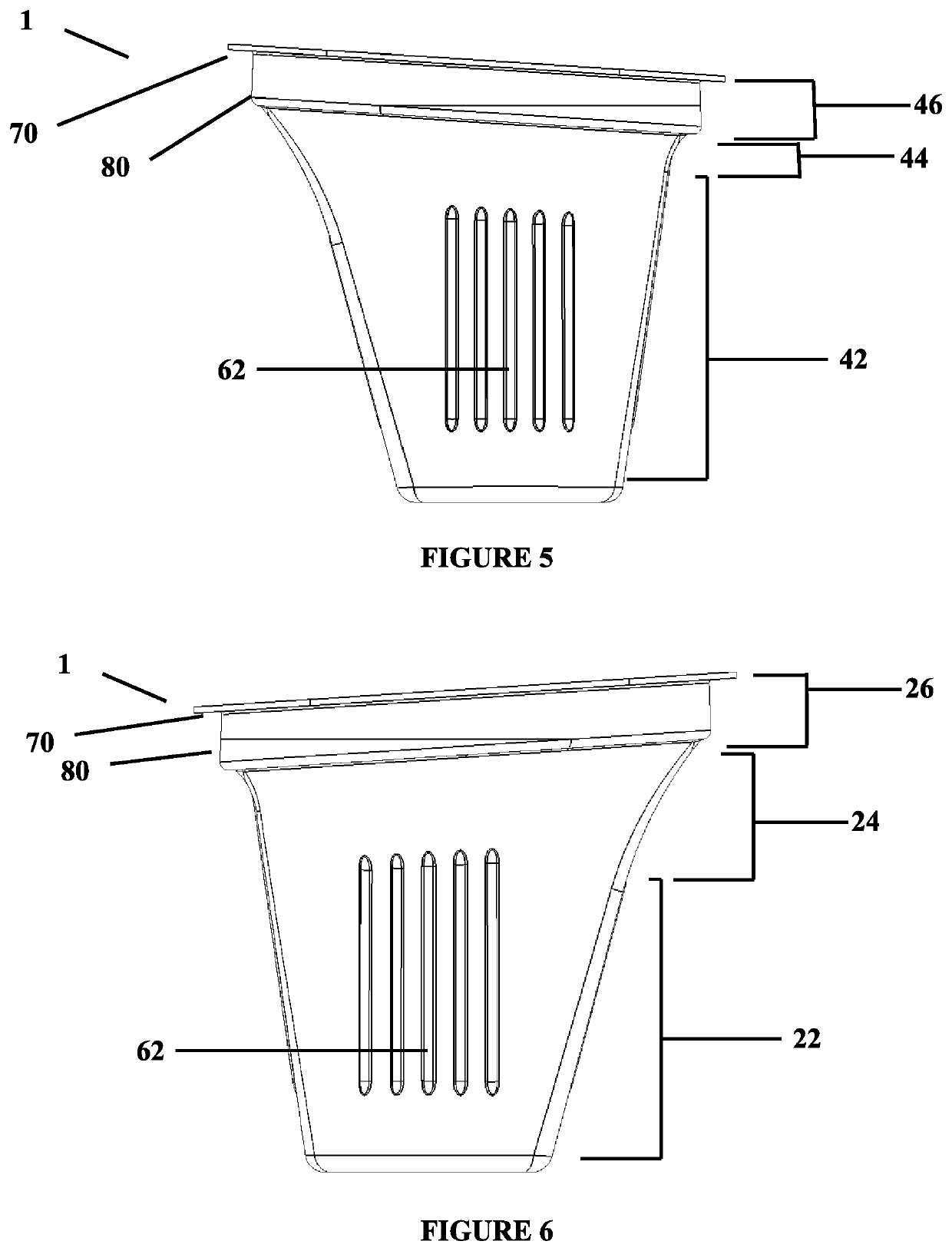Dysphagia cup
a technology of dysphagia and cup, which is applied in the field of dysphagia cups, can solve the problems of substances entering the lungs, dehydration and possibly renal failure, and difficulty in manipulating food and beverages in the mouth and subsequently swallowing
- Summary
- Abstract
- Description
- Claims
- Application Information
AI Technical Summary
Benefits of technology
Problems solved by technology
Method used
Image
Examples
Embodiment Construction
[0101]Embodiments of the invention will now be described with reference to FIGS. 1 to 25. In the figures, like reference numerals refer to like features.
[0102]FIGS. 1 to 8 illustrate a cup 1 for a patient suffering from dysphagia. The cup 1 includes a base 10 upon which the cup is capable of standing when on a level surface. The cup 1 also includes a leading wall 20 extending from the base 10. At least 50% of the length of the leading wall 20 is at an angle of at least 100 degrees relative to the base 10. Preferably, the lower 50% of the length of the leading wall 20 is at an angle of at least 100 degrees relative to the base 10. Furthermore, in a plane parallel to the base 10 a lip 30 of the leading wall 20 is arcuate with a greater curvature than a lower first portion 22 of the leading wall 20. The leading wall 20 is the wall of the cup 1 that faces a patient, if the patient were drinking from the cup 1.
[0103]As shown in FIGS. 3 and 6, the leading wall 20 includes a first portion ...
PUM
 Login to View More
Login to View More Abstract
Description
Claims
Application Information
 Login to View More
Login to View More - R&D
- Intellectual Property
- Life Sciences
- Materials
- Tech Scout
- Unparalleled Data Quality
- Higher Quality Content
- 60% Fewer Hallucinations
Browse by: Latest US Patents, China's latest patents, Technical Efficacy Thesaurus, Application Domain, Technology Topic, Popular Technical Reports.
© 2025 PatSnap. All rights reserved.Legal|Privacy policy|Modern Slavery Act Transparency Statement|Sitemap|About US| Contact US: help@patsnap.com



